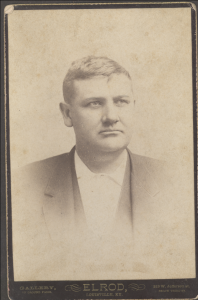"Why can't everything just be online?!?!"
 At some point most of us have pondered this question. Life would just be so much easier if everything was scanned into a big database, streamlined for our convenience, and text searchable. Trust me, as a scholar in the middle of doing research for my master’s thesis, I completely understand the frustration. Sometimes the thought of trekking hours away to look at printed copies of a newspaper or becoming blinded by the dull screen of the microfilm machine reinforces the idea that digital is always better.
At some point most of us have pondered this question. Life would just be so much easier if everything was scanned into a big database, streamlined for our convenience, and text searchable. Trust me, as a scholar in the middle of doing research for my master’s thesis, I completely understand the frustration. Sometimes the thought of trekking hours away to look at printed copies of a newspaper or becoming blinded by the dull screen of the microfilm machine reinforces the idea that digital is always better.
But through my work at Swem’s Special Collections Library, I have begun to understand that nothing is quite that simple. One of my first projects involved cataloging and organizing the Wissler-Mayer Family Papers. The papers included correspondence, personal finance records, and a plethora of pictures. The correspondence was mostly between family members and mainly dealt with daily life and troubles. The letters I found the most enjoyable were two from W.L. Wissler to his mother while he was training to be a Marine during World War I. Signed “Your Loving Son,” the letters were obviously written to alleviate some of his mother’s fears about his wartime efforts and to draw attention to his heroic sacrifices.
While the correspondence offered a glimpse into the lives of many of the family members, the large amount of pictures accompanying the letters provided a visual window into their existence. The pictures include mostly portraits and shots of the landscape (often times including a house and its surroundings). Both are extremely valuable and offer a greater understanding of life in the early twentieth century. My next project with this collection involves creating a lesson plan for school-age children, and I hope to utilize the portraits as the focus of my plan. I think children will find their clothing choices and demeanor within the portraits interesting, and possibly hilarious! I mean, would it kill them to smile once in a while?
While the pictures reveal a world far removed from our own, I am hoping it will allow the children to connect to history in a different way. Pictures almost allow a person to humanize history – no longer faceless numbers or facts, pictures allow a person to fully understand the power of individuals in history. Learning about soldiers in World War I is useful, but seeing pictures of a young soldier in training and reading his letters home brings the narrative to an individual, and personal, level.
After I finished organizing and rehousing the collection, I thought the project was completed. The newly acquired collection had been processed and accurately detailed for future patrons, so what else was left for me to do? I had overlooked digitizing.
Digitizing the collection to be put online involved scanning each piece and documenting the new file title. While not a difficult task, this process proved tedious and time consuming. Although I understand why archives digitize collections and how digital collections are able to reach far greater audiences, I was not a fan of scanning. A fan of the outcome – yes. The tedious work – no. But, in the end, hopefully someone will utilize the Wissler-Mayer Family Papers and it will all be worth it.
Hannah Craddock is a graduate student in the Department of History and a 2010-2011 Archives Apprentice in the Special Collections Research Center, Swem Library.

